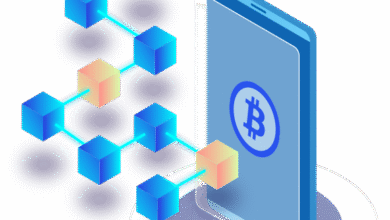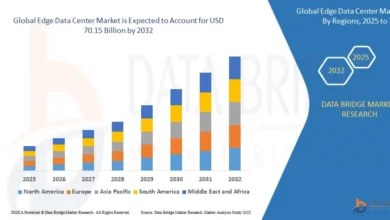OXVA Nexlim Go Pod Kit Review

Vaping technology continues to evolve, and every year new devices enter the market with better performance, improved flavor, and enhanced usability. One device that has been catching attention recently is the OXVA Nexlim Go Pod Kit. Known for its sleek design, long battery life, and dual mesh coil performance, this pod system delivers an exceptional vaping experience for both new and experienced users.
In this detailed review, we’ll explore everything about the Nexlim Go — from its specifications and features to design, performance, and real-world usability. If you’re looking for a device that blends performance, convenience, and style, this one deserves your attention.
What Makes the OXVA Nexlim Go Stand Out?
The OXVA Nexlim Go is not just another pod kit; it’s a re-engineered version of what modern portable vaping should be. Built with high-quality materials, a smart airflow system, and advanced coil technology, this pod kit aims to make vaping smoother, cleaner, and more flavorful.
What makes it truly impressive is how it balances simplicity with advanced functionality. It’s easy to use for beginners yet powerful enough to satisfy experienced vapers who crave consistent performance and rich flavor.
Compact Yet Powerful – The Design Philosophy
The Nexlim Go is designed for those who want a lightweight but robust device that feels comfortable in hand and fits easily in a pocket. It’s constructed from a durable blend of PC, PCTG, and PC/PU materials, ensuring both toughness and lightness.
With dimensions of approximately 28.5mm x 17.5mm x 122mm, it’s compact but still large enough to house a powerful internal battery. The weight, around 64 grams, makes it one of the most portable devices in its class.
The minimalistic body design, curved edges, and sleek finish give it a modern look. Despite its small size, the Nexlim Go feels premium. It’s available in several stunning colors including Space Gray, Sahara Brown, Rose Pink, Starry Blue, Silky Purple, Silky Coffee, Silky Black, and Black Warrior. These options ensure you can find a color that perfectly suits your personal style.
Key Specifications
Let’s take a closer look at the major specifications that define the Nexlim Go Pod Kit:
- Battery Capacity: 1800mAh (built-in)
- Output Power: Up to 40W
- Charging: Type-C, 5V/2A fast charging
- Pod Capacity: 4ml (Standard) / 2ml (TPD version)
- Coil Compatibility: Nexlim cartridges (0.6Ω / 0.8Ω / 1.2Ω)
- Filling Method: Top-fill system
- Airflow Control: Adjustable side slider
- Operation: Auto-draw activation
- Modes: ECO and BOOST
- Material: PC, PCTG, PC/PU
- Dimensions: 28.5 x 17.5 x 122mm
- Weight: ~64g
Each element of this setup has been fine-tuned to ensure users get convenience without compromising on flavor or vapor quality.
Dual Mesh Coil Technology – The Flavor Advantage
One of the most talked-about features of the Nexlim Go Pod Kit is its Dual Mesh Coil Technology. Unlike traditional single-mesh designs, this system uses two mesh coils working together to enhance heating consistency.
The result is:
- 200% better flavor delivery
- 200% longer coil lifespan
- More consistent vapor production
This means your e-liquid tastes better for longer, and you’ll spend less money on replacement pods. It’s a clever innovation that enhances both efficiency and enjoyment.
The device supports three coil options – 0.6Ω, 0.8Ω, and 1.2Ω – allowing you to customize your experience based on your preferred vaping style:
- 0.6Ω: Ideal for restricted direct lung (RDL) vaping with denser vapor.
- 0.8Ω: A balanced option for flavorful, semi-warm vapor.
- 1.2Ω: Perfect for mouth-to-lung (MTL) vaping, mimicking the feel of traditional smoking.
Battery Life and Charging Speed
The 1800mAh battery built into the Nexlim Go ensures you get plenty of vaping time between charges. For moderate users, it easily lasts a full day or more. The battery supports Type-C 5V/2A fast charging, meaning it can recharge in about 45–60 minutes, depending on your power source.
A tri-color LED battery indicator provides instant updates on your battery level:
- Green: 65–100%
- Blue: 30–65%
- Red: Below 30%
This simple yet effective system makes it easy to keep track of power without complicated displays or menus.
Dual Modes – ECO and BOOST
OXVA designed the Nexlim Go with two vaping modes to let users tailor their experience:
- ECO Mode:
- Designed for longer coil and battery life.
- Produces a smoother draw and moderate vapor.
- Ideal for all-day vaping and nicotine salt e-liquids.
- BOOST Mode:
- Enhances vapor density and intensifies flavor.
- Increases wattage output for a warmer, fuller hit.
- Perfect for those who enjoy a more powerful session.
Switching between the two modes is simple and lets you fine-tune performance based on your needs.
Adjustable Airflow and Auto-Draw Function
The Oxva Nexlim Go includes a side airflow slider that gives precise control over the draw resistance. You can adjust it from a tight, cigarette-like pull for MTL vaping to a looser, airier flow for RDL vaping.
The auto-draw function eliminates the need for a power button. Simply inhale through the mouthpiece, and the device activates automatically. This not only adds convenience but also gives the Nexlim Go a clean, button-free look.
Leak-Resistant Top-Fill Design
Refilling is one of the easiest parts of using the OXVA Nexlim Go. The top-fill system features a secure silicone plug that keeps leaks at bay while making refills quick and mess-free.
OXVA’s innovative five-layer leak protection system helps prevent condensation and seepage. This structure includes multiple seals and an internal airflow chamber that keeps the pod clean and dry even during extended use.
With a 4ml e-liquid capacity (2ml for TPD regions), you can enjoy long sessions without constant refilling.
User Experience and Performance
When using the Oxva Nexlim Go, one of the first things you’ll notice is how smooth and consistent the vapor feels. Whether in ECO or BOOST mode, the draw is clean and flavorful. The dual mesh coils produce an impressive amount of vapor without overheating the liquid or muting flavors.
The flavor retention is excellent, especially with 0.8Ω pods, which deliver a warm yet balanced output. Even after several refills, the flavor remains strong, showing how well the coil system preserves e-liquid quality.
Battery endurance also stands out. Even with frequent vaping, the device easily handles a full day. The fast-charging USB-C port means minimal downtime between sessions.
For users who switch between MTL and RDL styles, the adjustable airflow is a game changer. It provides a truly customizable experience. The tight draw mimics a cigarette perfectly, while the open draw offers smooth, airy vapor for those who prefer bigger clouds.
What’s Inside the Box
When you purchase the Oxva Nexlim Go Pod Kit, here’s what you typically receive:
- 1 × Nexlim Go Device
- 1 × Nexlim Cartridge (0.8Ω, 4ml Standard / 2ml TPD version)
- 1 × User Manual
It’s a simple, straightforward package that includes everything you need to get started.
Pros and Cons
Pros:
- Compact and stylish design
- Dual mesh coil technology for better flavor
- Long-lasting 1800mAh battery
- Fast USB-C charging
- Adjustable airflow system
- ECO and BOOST modes for flexibility
- Leak-resistant top-fill pod
- Auto-draw activation for simplicity
- Wide range of color options
Cons:
- Fixed coils mean you must replace the entire pod rather than just the coil.
- Limited wattage adjustment (automatic mode selection).
- Slightly larger than ultra-mini pod kits.
However, these are minor trade-offs considering the overall performance and quality of the device.
Maintenance and Care Tips
To extend the life of your Oxva Nexlim Go, follow these tips:
- Prime your pod: Always let the e-liquid sit for 5–10 minutes before your first puff.
- Avoid overfilling: Keep liquid below the fill line to prevent leakage.
- Clean regularly: Wipe the connection points with a tissue or cotton swab to maintain proper contact.
- Use recommended e-liquids: Best results come from nicotine salts or 50/50 VG/PG blends.
- Store safely: Avoid high heat and direct sunlight when not in use.
With these small steps, your pod kit will stay reliable for a long time.
Who Should Buy the Nexlim Go Pod Kit?
The Oxva Nexlim Go is ideal for vapers who value performance, portability, and simplicity. It’s great for:
- Beginners transitioning from disposable vapes or cigarettes.
- Intermediate users wanting flavor consistency and a long-lasting battery.
- Experienced vapers seeking a compact yet powerful backup device.
If you want smooth flavor, great vapor, and low maintenance, the Nexlim Go is a solid choice.
Final Thoughts
The OXVA Nexlim Go Pod Kit combines modern aesthetics, impressive flavor output, and long battery life in a sleek, pocket-friendly package. With features like dual mesh coils, dual vaping modes, leak-resistant pods, and quick charging, it’s designed to make vaping both enjoyable and effortless.
Whether you prefer strong nicotine salts or lighter freebase e-liquids, this device can handle both perfectly. The build quality feels premium, the airflow control is precise, and the dual coil setup ensures consistent performance over time.
If you’re searching for a durable, efficient, and flavor-rich pod kit, the Oxva Nexlim Go deserves a place on your shortlist. It stands as one of the most balanced pod systems of its kind — versatile enough for beginners and powerful enough for advanced vapers.







